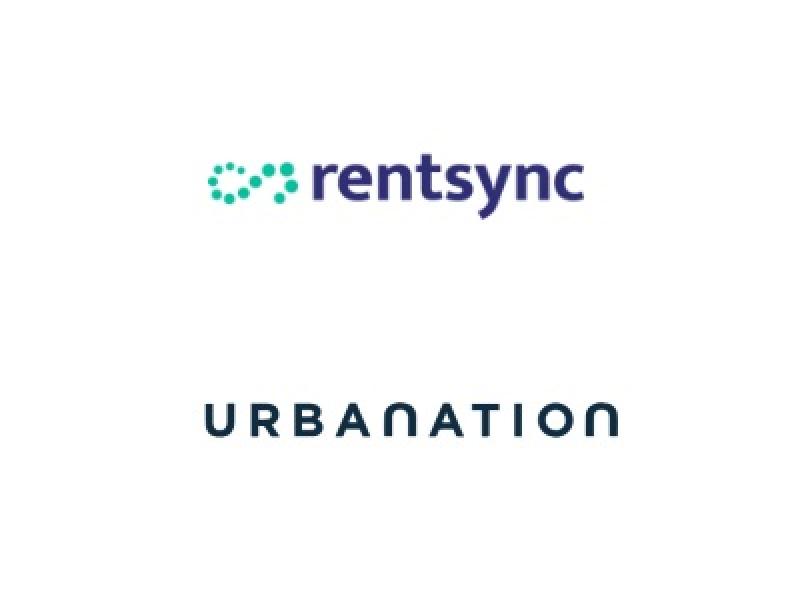
Canada’s industrial sector had strong fundamentals prior to the pandemic, and should emerge from the crisis without too much damage, panelists agreed during a Canadian Real Estate Forums webinar April 24. (Google Street View)
Industrial real estate was a top-performing asset class backed by strong fundamentals when the COVID-19 pandemic shut down a large part of the Canadian economy.
The consensus from the five participants in an April 24 Canadian Real Estate Forums webinar is that industrial vacancy rates, leasing, rents, investment and development will for the most part emerge from the crisis in good shape.
Panel moderator Colliers International executive vice-president Gord Cook said the national vacancy rate for industrial properties had fallen to a historically low two per cent, with Vancouver and Toronto at half that. Net effective rents reached record numbers in many markets, averaging $8.60 per square foot nationally and reaching double digits in several markets.
There was 25 million square feet in the development pipeline, with the Greater Toronto Area (GTA) representing about 40 per cent.
Industrial trading volume in 2019 was just shy of $5 billion, including more than $1.5 billion in the GTA alone. Capitalization rates for industrial properties had gone below five per cent in some markets over the last three years.
“There wasn’t a sector that wasn’t firing on all cylinders,” said Cook. “On the buy side, we saw private, institutional and public markets very, very active and building up their portfolios and actively managing those real estate assets.”
Outlook in major Canadian markets
Todd Yuen is the president of industrial at Burnaby-headquartered Beedie, the largest private industrial landowner, developer and property manager in Western Canada.
He said the company has made two significant new lease deals and renewed others in the past three weeks, all at pre-COVID prices.
“From a Vancouver perspective, COVID hasn’t impacted the supply or scarcity question,” said Yuen. “There was a ton of pent-up demand pre-COVID that, in my opinion, is still looking for a home.”
Yuen doesn’t foresee any short-term changes in pricing or investment yields in Vancouver.
Charlie Deeks, chief investment officer at Toronto-based Pure Industrial Real Estate Trust, said PIRET has been focused on the GTA, Montreal and Vancouver markets because of their population and job growth.
PIRET has acquired more than $2 billion in assets since going private (it was purchased by an affiliate of Blackstone Property Partners, and Ivanhoé Cambridge in 2018) and he doesn’t anticipate that momentum changing.
“In the GTA, if we got back 20 million square feet, we’d only have a vacancy rate of 2.5 per cent,” said Alistair Pickering, industrial vice-president for Oxford Properties, which has an industrial portfolio worth more than $2 billion.
“I don’t see that happening. We’re still going to have demand for good product. I think we’re going to see a pause, but I don’t know for how long.
“We’re going to be in strange and choppy waters until we get to an end game in managing the pandemic.
“But, once we’re out of that and we see things coming back, there will be enough demand to take up what limited product is available.”
Oxford’s industrial portfolio includes properties in Alberta. Pickering said there are many oil-based services and warehouses in Edmonton, while Calgary is a distribution hub for a variety of goods across Western Canada.
Calgary has an oversupply of industrial space due to construction on the outskirts of the city, where land was easy to find.
No upward pressure is expected on Alberta industrial rents.
If there is a surplus of goods to be stored because closed retail outlets haven’t been able to sell them, Pickering said it will be cheaper to do it in Calgary than where they come off ships in Vancouver, so that could create some short-term opportunities.
“Albertans are young and entrepreneurial and they will find a way back, but I think it’s going to be tough for a while,” said Pickering.
“As long as we see consumption come back, Calgary is a logical place for Western Canadian distribution.”
Healthcare of Ontario Pension Plan (HOOPP) senior portfolio director of real estate Chris Holtved said industrial rent collection in Alberta was 20 per cent lower than in other parts of the country.
The province was already struggling and the oil and gas price collapse, COVID-19 and a large amount of small-bay industrial tenants has made the problem worse.
COVID-19 and industrial rents
Outside of Alberta, the two per cent industrial vacancy rate makes it a property owner-friendly market.
“The market really has to go through a fair bit of stress before you see any downward pressure on rents,” said Holtved.
“In a one or two per cent vacancy market, even if there’s a give-back, landlords are going to say ‘I’m two per cent vacant so I’m really not moving my rents that much’.”
Deeks said the need for storage space for raw product might soften. He also doesn’t expect as many large infrastructure projects as governments focus on other areas of the economy and reducing debt.
“I definitely think you’re going to start seeing some softening in the small-bay market and some attrition for tenants who have limited to no supply chains, maybe a handful of customers, and not a very diverse product line,” said Deeks.
“But, at the same time, I don’t think that will necessarily translate into spikes in supply in the short term.
“I don’t think you’re going to see a lot of landlords changing the locks any time soon, or putting eviction notices on the doors.
“Now is the time for forbearance and to work with some of these groups to keep your best tenants in your buildings with hopes of a brighter day in the future.”
PIRET collected about 90 per cent of April rent, but May is expected to be lower as the effects of the pandemic compound.
Of the 10 per cent not collected in April, Deeks said he was annoyed more than half was from a couple of Fortune 500 companies that could afford to pay rent, but chose not to.
Holtved said large-bay buildings went through the April rent collection cycle well while smaller-bay tenants, largely private companies without a lot of cash flow, were more stressed.
He anticipates at least some business closures.
“Industrial demand is almost perfectly correlated to GDP over history,” said Holtved.
“So the demand for industrial space going forward will be directly driven by what happens to GDP, because GDP is just people buying stuff. And that stuff has to be stored somewhere.”
Deeks believes the COVID-19 crisis will make landlords look more closely at the business models of potential tenants to see if they’re equipped to weather financial storms and stick around for the long term.
Holtved agreed: “This period is a great lesson. It’s too late to focus on covenant.
“When you should have been focusing on covenant was when times were good, because that’s when you want to make sure that you have good covenants in place for this time.”
Industrial land values and transactions
Yuen said Beedie had eight industrial sites under contract across Canada before the crisis. All are on hold until the company gets a better understanding of what’s going to happen.
Beedie is watching the situation in the United States as well, because of its tight trade ties to the Canadian industrial sector. There are concerns the pandemic could be prolonged if the U.S. economy opens up too quickly.
If the economy recovers quickly, Yuen said the impact on land prices should be negligible in core markets.
If it doesn’t get back to full strength for a prolonged period, he expects values to drop on a short- to medium-term basis even in markets like Vancouver.
“Much of what was driving those land values in a market like Vancouver, and we’re as guilty of it as any developer out there, is that we were speculating on continued growth,” said Yuen.
“Year-over-year increases in rental rates helped us underwrite some very aggressive land pricing, but we have to correlate that with demand.”
Much of Beedie’s land features strata developments which largely appeal to smaller, privately owned companies.
Yuen said Beedie has continued to transact on strata purchases over the past three weeks and has received unconditional offers from across Canada, including Alberta, as businesses look long term.
While prices have been stable, there haven’t been many significant industrial transactions recently.
“For groups with office and retail exposure, industrial is going to be the darling child of their portfolios so you’re not going to see a lot of trades for them,” said Deeks, “and you’re going to see a lot of investors looking for more of it.”
PIRET is looking at some acquisition options and can act quickly. However, unless it sees a deep discount to replacement cost and a strong covenant, it likely won’t take the plunge at this point.
“There’s no deal that we absolutely need to do and we can remain patient,” said Deeks.
Holtved and Pickering expect construction stoppages and other COVID-19-related delays, so far, will slow industrial building completions by three to four months.







